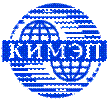E. Graph analysis (2 pts)
Kazakhstan Institute of Management, Economics and Strategic Research
 |
SCHOOL OF GENERAL EDUCATION
MIDTERM
GEN1030
INTRODUCTION TO ENVIRONMENTAL STUDIES
September 29, 2011
Section # __________ Fall 2011
Instructor___________________________
Student’s Surname___________________
ID #___________________
Please read the following examination rules. Any failure to observe the following rules will be considered cheating, and you will receive an F for the exam.
1. Candidates may not leave the room once the examination has started. Candidates leaving the examination room will
not be allowed to come back into the examination room.
2. Candidates MUST produce their ID cards.
3. All books, materials, papers, notes, magazines, journals, bags, brief cases and other materials must be placed in the designated area.
4. All work must be carried out in the official answer sheet. No other paper may be used.
5. Candidates may not borrow anything from other candidates.
6. Talking to anyone other than the invigilator in the examination room is regarded as cheating.
7. The examination will be conducted in strict silence. Mobile phones, pagers, and clock/watch alarms must be turned
off.
8. No questions may be asked after the examination is commenced.
9. All communications, in any form or looking at each other’s papers are strictly prohibited.
10. Any candidate continuing to work after the invigilator announced that time is up or after the “pens down” announcement will be considered to have breached the rules and committed an act of cheating.

I have read and understood the examination rules, and I take the full responsibility of the consequences of
violating these rules.
(Signature) ___________________________
Midterm (15 pts)
A. Multiple-choice questions (0.5 pts x 15 = 7.5 pts)
1. Anthropogenic sources of pollution are:
A) earthquake
B) automobile exhausts
C) electromagnetic waves
D) volcano eruption
2.Sustainable agriculture means:
A) production of food and fiber on a sustainable basis and repair damage caused by destructive practices
B) wider use of genetically modified crops
C) tendency to grow crops with organic fertilizers and no pesticides
D) increase in agricultural land use and use of intensive farming practices
The international agreement governing problem of ozone layer depletion and phasing out substances that
cause it:
A) Kyoto Protocol (1997)
B) Montreal Protocol (1987)
C) Clean Air Act (1970)
D) Resolution of International Earth Summit (1992)
In food webs (pyramids) a quantity of organisms as we move to higher trophic level
A) decreases
B) increases
C) does not change
D) changes in cyclic mode
5. Three essential types of biodiversity are all of the following EXCEPT
A) Genetic diversity
B) Population diversity
C) Ecological diversity
D) Species diversity
6. Heavy metals as toxic substances are classified as ________
A) teratogens
B) neurotoxins
C) carcinogens
D) mutagens
7. All the following are the examples of symbiotic relationships, EXCEPT
A) commensalism
B) competition
C) parasitism
D) mutualism
8. Biodiversity hotspots are located mostly
A) in Latin America
B) near South Pole
C) near the equator
D) in Africa
9. Population in developed North America is characterized by stable population growth rate mostly due to
A) low death rates
B) high birth rates
C) immigration
D) emigration
10. Which of the following results in population increase:
A) epidemic
B) pandemics
C) mortality
D) immigration
E) morbidity

11. In the diagram, which state of matter is represented by the letter C?
A) solid
B) plasma
C) gas
D) liquid
12. Poor people in rice-dependent countries are very likely to suffer from the deficit of the following nutrient
in their diet:
A) protein
B) vitamin C
C) iodine
D) vitamin A
13. The three crops that humans are most dependent on for nourishment are
A) corn, potatoes, and oats
B) oats, rice, and corn
C) corn, wheat, and rice
D) potatoes, wheat, and barley
E) rice, wheat, and soybeans
14. The average number of children born to each women during her reproductive lifetime is the
A) birth rate
B) biological productivity
C) biotic potential
D) total fertility rate
15. White bread and whole grain bread occupy the same level of Food Pyramid.
A) True.
B) False.
B. Fill in the blanks (0.5 x 2 = 1 pt):
1. _______________________ refers to the process of selective absorption and storage of toxins by living organisms.
2. _________________ are chemicals or other factors that cause abnormalities during embryonic growth and development.
C. Answer the following question (2 points):
Define EXTINCTION, main causes of extinction today. Give three examples of the species that are close to extinction. Which of them live in Kazakhstan?
is the end of an organism or of a group of organisms (taxon), normally a species. A species becomes extinct when the last existing member die
hunting, fishing,
Saiga, tiger, polus bear
D. Solve the following problem (2.5 points) :
Consider the following demographic data for Kazakhstan in 2006:
the country population at the beginning of 2006 was 15,233,240 people; the total number of births and
deaths for year 2006 was 242 thousand and 143 thousand respectively; net migration was equal to -51
thousand people. Find the following:
A) Annual population change for 2006.
B) Crude growth rate.
B) Rate of natural increase (in %).
E. Graph analysis (2 pts).
Dichlorvos (дихлофос)is a pesticide commonly used in sprays for the control of ants, bedbugs, mice, cockroaches and other pests. The curve below shows dermal (skin) effect of this toxic pesticide on population of mice as a function of a dose applied.
a) Name Y-axis for this graph, indicate marked values on this axis and units to be used.
b) Find LD50 value for pesticide dose and explain its meaning.
c) Estimate LD50 value for the average mouse assuming that average lab mouse weighs ~20 g.
d) How much pesticide do we need to exterminate a population of 200 mice?

BONUS (2 points):
Express your position on the following topic: